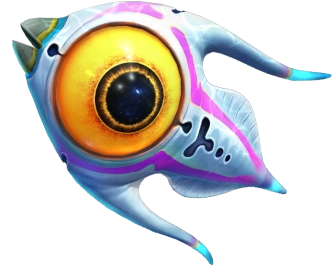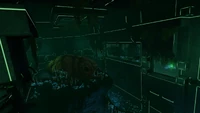No edit summary |
No edit summary |
||
| Line 10: | Line 10: | ||
{{clear}} |
{{clear}} |
||
==Data Bank Entry== |
==Data Bank Entry== |
||
| − | <tabber> |
||
| − | =Remains of Research Specimen |
||
{| style="width: 100%;" class="article-table sortable" border="0" cellpadding="1" cellspacing="1" |
{| style="width: 100%;" class="article-table sortable" border="0" cellpadding="1" cellspacing="1" |
||
|- |
|- |
||
| Line 22: | Line 20: | ||
# Evolution:<br />While it shares some skeletal traits with the biter and sandshark, including its distinctive double eye sockets, this fossilized specimen is significantly larger, and features unusual forearms rarely seen in aquatic species. This species has likely gone extinct in the past thousand years, and its evolutionary relatives have evolved almost beyond recognition. |
# Evolution:<br />While it shares some skeletal traits with the biter and sandshark, including its distinctive double eye sockets, this fossilized specimen is significantly larger, and features unusual forearms rarely seen in aquatic species. This species has likely gone extinct in the past thousand years, and its evolutionary relatives have evolved almost beyond recognition. |
||
|} |
|} |
||
| − | </tabber> |
||
==Gallery== |
==Gallery== |
||
Revision as of 23:08, 6 January 2018
This large predator was kept in the main aquarium of the Disease Research Facility for a long period of time for testing purposes. The skeleton is very odd in appearance, having a solid exterior shell, as well as an interior skeleton. The PDA notes shared skeletal traits with the Biter and Sand Shark, implying distant relation between the three species. It is assumed that this species died off around 1000 years ago due to Kharaa.
Data Bank Entry
|
The skeletal remains of a vast predator, housed within an artificial habitat.
|




